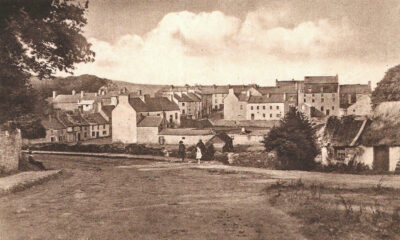News
More great choices for large shrubbery

Following last week’s article on large shrubs, I received many comments, suggestions and questions, leading me to believe that there were quite a few people unsure of what to plant in a large space.
I felt at the end of the article there were definitely more plants for that list so here are some more great choices for the large shrubbery.
The bottlebrush, or Callistemon, is named appropriately for the shape of its flowers which are bottle-brush like spikes of many small flowers with long stamens, giving it that brush like appearance. Usually red, they are also available in yellow and pink. They flower in summer and into autumn adding a lovely splash of colour. Their leaves are hard and spiky with arching branches. Cut them back immediately after flowering or they will not flower the following year. If they do grow out of hand, they will tolerate a hard cut back.
Ceanothus, or the Californian lilac, is an often evergreen shrub bearing dark blue flowers. There are several sizes from the low creeping C. repens, to the tree like proportions of C. thyrsiflorus. An ideal candidate for the large border is C. ‘Gloire de Versailles’, which has large blue flowers from July to the end of autumn, (deciduous), or C. ‘Southmead’ which has dark blue flowers in early spring (semi-evergreen), or C. ‘Blue Mound’ which has deep blue flowers (evergreen). I find with all ceanothus that their flowering times seem to be very weather dependant!
Forsythia is a large common shrub which flowers early in spring before the leaves appear. I mention it as it seems to have gone out of fashion completely, though it adds such a fantastic yellow brightness in those dark February days.People often complain that it either grows out of all proportions or that it does not flower. If pruning, do so immediately after flowering. ‘Golden Nugget’ is possibly one of the smaller varieties at a natural five foot.
An unusual, but well worth finding plant is the Sorbus reducta. It is a low 1-1.5m type of mountain ash, with all the great features of its larger tree relatives! It forms a thicket – yes, it does sucker, but does not take over, has white flowers followed by dark red berries which fade to a creamy colour. Like most mountain ashes, its autumn colour is blazing!
Butterfly bushes, buddleja, are a much maligned plant as it can self seed and become a bit of a nuisance. However, it does not really self seed much in gardens where the conditions are not ideal, (ideal conditions – derelict, dry, stony waste land). Most cultivated varieties are sterile, so there is no reason to avoid them! B. colvilei is a very unusual variety, being semi-evergreen with large panicles of tubular dark pink flowers – these clusters can reach up to 20cm. B. davidii is the common butterfly bush and is available in a range of colours such as ‘Black Knight’, deep, deep purple, ‘Empire Blue’, blue flowers with orange centre, ‘Royal Red’, deep pink/maroon. One of my favourites is ‘Harlequin’ which has variegated leaves. There is a range of smaller butterfly bush available too; the ‘buzz’ series.
These remain compact, up to 1m, however their flowers are not quite as impressive! To remedy that, plant breeders have come up with a new variety – the ‘Rocketstar’ series. I have only just planted one, but it promises a diminutive 80cm with the same large flowers as large varieties have. If this plant does what its creators claim, it will certainly be a hit in my garden!
News
Fergal Brosnan appointed CEO of RDI Hub
The RDI Hub in Killorglin has announced the appointment of Fergal Brosnan as its new Chief Executive Officer. Brosnan succeeds Liam Cronin, who becomes Director of Innovation at NovaUCD. A […]
News
Spa GAA and Kerry Parents & Friends secure energy grant funding
Spa GAA and the Kerry Parents & Friends Association are among the Kerry organisations to benefit from the SE Systems Community Fund Programme 2025. Both groups have been announced as […]

























